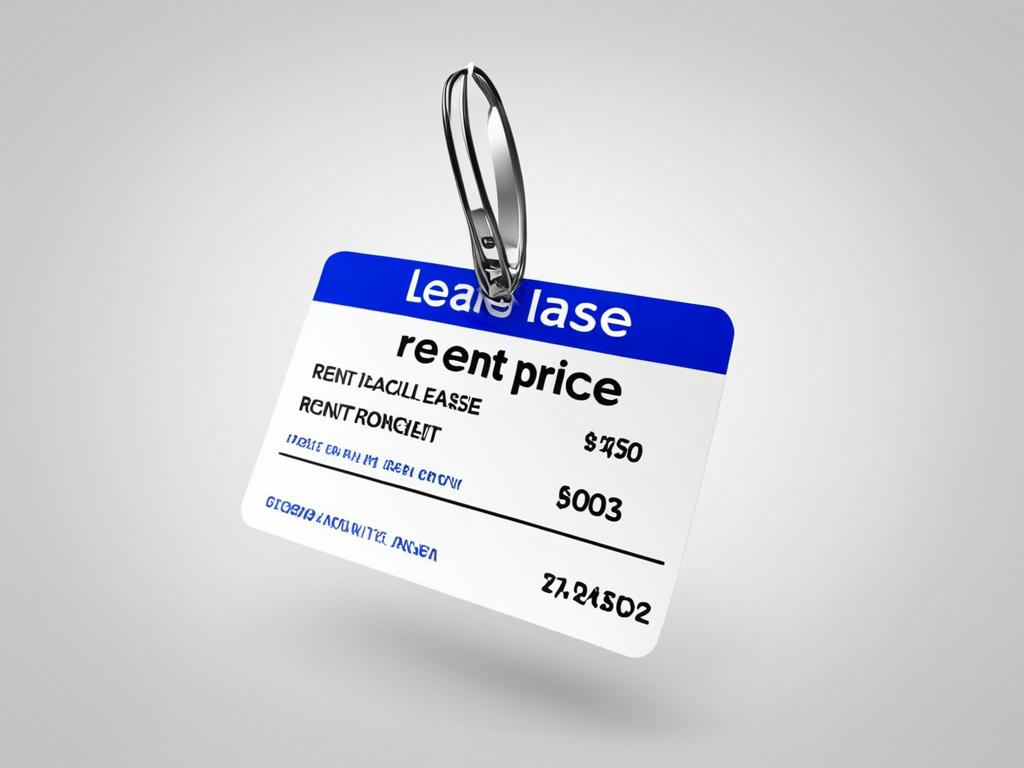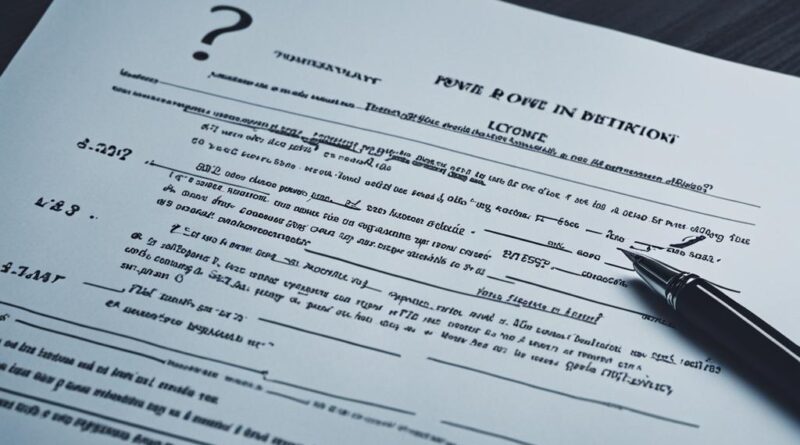Can Landlord Change Lease Post-Signing? Find Out!
Once you’ve signed a lease agreement with your landlord, you might be wondering if they can make changes to it without your consent. Can a landlord change a lease after it has been signed? The answer is not straightforward and depends on various factors.
Generally, a lease agreement becomes a legally binding contract as soon as both parties, the landlord and the tenant, have signed it. This means that the terms and conditions outlined in the agreement are enforceable by law. However, there are circumstances in which a landlord may attempt to modify the lease terms after signing.
These modifications can only be made through a lease amendment agreement, which requires the consent and signatures of both the landlord and the tenant. Without this mutual agreement, the original lease terms remain in effect.
In the next sections, we will explore when a landlord can change a lease agreement, common examples of lease modifications, hidden changes to watch out for, and both landlords’ and tenants’ rights in lease agreements. It’s essential to be aware of your rights and responsibilities as a tenant to protect yourself and ensure a fair and transparent tenancy.
Key Takeaways:
- A lease agreement becomes legally binding once both the landlord and tenant sign it.
- A landlord cannot change the terms of the lease without the consent of the tenant.
- Lease modifications can only be made through a lease amendment agreement signed by both parties.
- Common lease modifications include changes to rent, late fees, amenities, and tenant behaviors.
- Hidden changes in lease agreements may grant landlords the ability to modify rent and restrict access to the property.
When Can a Landlord Change a Lease Agreement?
A landlord has the ability to change a lease agreement in certain circumstances. It’s important to be aware of these situations to understand your rights as a tenant. Here are three scenarios in which a landlord can make changes to a lease agreement:
- Lease Renewal: When the lease is up for renewal, the landlord may propose changes to the terms of the agreement. However, they must notify you of these changes in advance, allowing you the opportunity to review and discuss them before signing the new lease.
- New Tenancy: If you are a new tenant entering into a lease agreement, the landlord may update the terms to reflect any changes that have occurred since the previous tenant’s lease. This is typically done to ensure that the agreement is current and aligns with the landlord’s current policies.
- Lease Addendum: At any point during your tenancy, the landlord may propose changes to the lease agreement through a lease addendum. This is a separate document that both parties must sign to modify or add new terms to the existing lease. Any changes made must be mutually agreed upon by both the landlord and the tenant.
It’s important to remember that any changes to the lease agreement must be agreed upon by both parties. As a tenant, you have the right to review and discuss proposed changes before signing any modified lease agreement. Open communication with your landlord is key to ensuring that any modifications are fair and reasonable.
By understanding when a landlord can change a lease agreement, you can protect your rights as a tenant and ensure that any modifications to the lease agreement are done in a fair and transparent manner.
Examples of Lease Modifications
During the tenancy, landlords may attempt to make various changes to the lease agreement. These modifications can impact different aspects of the lease and may require the tenant’s consent and agreement. Here are some common examples of lease modifications that landlords may try to initiate mid-lease:
1. Increasing Rent Before the Lease Expires
One common change landlords may propose is increasing the rent amount before the lease expiration date. This could be due to various factors such as market conditions or increased expenses on their part. However, any rent increase mid-lease must be agreed upon by both parties and documented through a lease amendment agreement.
2. Changing Late Fees or Grace Periods
Landlords may also seek to modify late fees or grace periods for rent payments. They may want to impose stricter penalties for late payments or adjust the amount of time tenants have to pay rent after the due date. Similarly to rent increases, any changes to late fees or grace periods must be agreed upon and documented in a lease amendment agreement.
3. Introducing Additional Fees for Amenities
In some cases, landlords may decide to introduce additional fees for amenities that were previously included in the rent. For example, they may start charging separately for parking spaces, gym access, or laundry facilities. This change should be clearly communicated to tenants and agreed upon through a lease amendment agreement.
4. Modifying Lost Key and Lock-Out Policies
Landlords may want to modify the policies regarding lost keys or lock-outs. They may introduce new procedures or fees for replacing lost keys, changing locks, or providing access to locked units. These changes should be discussed with tenants and agreed upon through a lease amendment agreement.
5. Prohibiting Tenant Behaviors
Another common change landlords may try to implement involves prohibiting certain tenant behaviors that do not violate the terms of the current lease. For example, they may seek to restrict pets, smoking, or certain types of renovations. It is important for tenants to review and understand these changes, and if agreed upon, they should be documented in a lease amendment agreement.
It’s important to note that any modifications to the lease agreement should be made in good faith and with the agreement of both parties involved.

Image: Example of a landlord increasing the rent in the middle of a renting period.
Understanding Hidden Changes in Lease Agreements
When signing a lease agreement, it’s important to carefully review the terms and clauses. Some lease agreements may contain hidden changes that grant the landlord certain rights to modify the rental fee or restrict tenant access to parts of the property without obtaining a new or mutual agreement.
To protect your interests as a tenant, thoroughly read and understand the written agreement. Pay close attention to any ambiguous or open-ended language that may allow for potential hidden changes. If you encounter unfamiliar terms or clauses, it’s wise to seek legal advice to fully comprehend the implications of the landlord’s “standard contract”.
“Hidden changes in lease agreements can have significant consequences for tenants. It’s crucial to be vigilant and proactive in understanding the terms before entering into a binding contract.” – Legal Expert
By familiarizing yourself with the terms and conditions of the lease agreement, you can ensure that you are fully aware of any hidden changes that may impact your tenancy. This knowledge empowers you to protect your rights as a tenant and make informed decisions about the agreement.
Remember, a lease agreement is a legally binding contract that outlines the rights and responsibilities of both the landlord and the tenant. While landlords have certain rights to enforce lease terms, tenants also have rights to a habitable property, privacy, and timely repairs.
Examples of Hidden Changes in Lease Agreements:
To illustrate the potential hidden changes in a lease agreement, consider the following scenarios:
- A landlord may include a clause that grants them the right to increase the rental fee mid-lease without seeking the tenant’s consent.
- The lease agreement may contain terms allowing the landlord to modify access to certain parts of the property, such as common areas or facilities.
These examples highlight the importance of thoroughly reviewing the lease agreement to identify any hidden changes that could potentially impact your tenancy.
Being aware of hidden changes in lease agreements equips you with the knowledge necessary to address any discrepancies or seek clarification from the landlord. By understanding your rights and responsibilities as a tenant, you can navigate the rental agreement with confidence and ensure a smooth tenancy.
Conclusion
Lease agreements are legally binding contracts that establish the rights and responsibilities of both landlords and tenants. Before signing a lease, it is crucial for both parties to thoroughly review and comprehend the terms to prevent any potential misunderstandings or legal complications.
Landlords do have the ability to make changes to lease agreements, but only under specific circumstances. To modify the terms, they must obtain the tenant’s consent and execute a new agreement. This process typically involves either a lease amendment or a lease addendum, depending on the extent of the changes.
Tenants possess certain rights in leases, including the right to a habitable living environment, timely repairs, and privacy. Landlords, on the other hand, have the right to collect rent and enforce lease terms. It is essential for both parties to be aware of and respect each other’s rights throughout the duration of the lease.
Furthermore, it is important to note that tenant-landlord relationships are governed by specific state laws. Familiarizing oneself with the relevant tenant-landlord laws in their state can help both parties understand their obligations and protections within the lease agreement.
FAQ
Can a landlord change a lease after it has been signed?
Generally, a landlord cannot change a lease without the consent of the tenant, unless the original lease allows for independent changes. Lease modifications can only be made through a lease amendment agreement, signed by both parties.
When can a landlord change a lease agreement?
A landlord can change a lease agreement upon lease renewal, when signing a new agreement with incoming tenants, or through a lease addendum, which is an amendment signed by both parties.
What are some common changes landlords try to initiate mid-lease?
Some common changes landlords may attempt to make during the tenancy include increasing rent, changing late fees or grace periods, introducing additional fees for amenities, modifying lost key and lock-out policies, and prohibiting tenant behaviors. These changes can only be made if both parties agree and sign a lease amendment agreement.
Are there hidden changes in lease agreements?
Some lease agreements may include clauses that allow landlords to make changes during the tenancy without a new or mutual agreement. Tenants should carefully read the written agreement before signing to identify any “hidden changes” that may grant the landlord the ability to modify the rental fee or restrict access to parts of the property.
What should tenants know about lease amendments and addendums?
Lease modifications can be made through a lease amendment agreement signed by both parties or a lease addendum that adds new terms. Tenants should be aware of their rights and obligations as outlined in the lease agreement and familiarize themselves with state-specific tenant-landlord laws.

